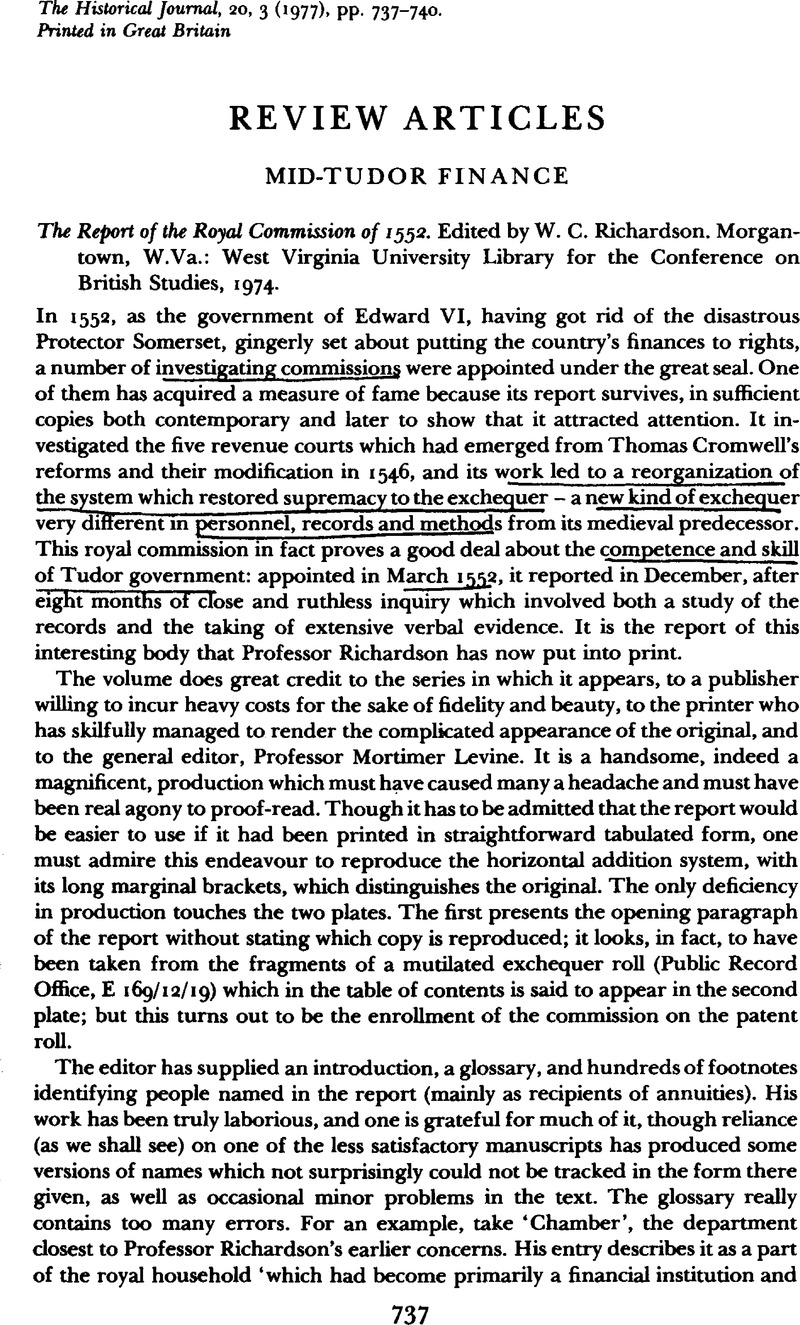Published online by Cambridge University Press: 11 February 2009

1 Of the original nine commissioners four were councillors and five were not; the six actually active at first divided equally until Sir Robert Cotton was during the sittings of the commission sworn of the privy council.
2 I acknowledge with gratitude the gracious permission of Her Majesty the Queen to consult this volume. I discovered its existence because it is mentioned by Davenport, C. J., Thomas Berthelet: royal printer and bookbinder to Henry VIII (Chicago, Caxton Club, 1901), p. 89.Google Scholar I was following up an interest in Berthelet who, it turns out, did not bind this or any of the other items listed by Davenport: but Davenport's error put me accidentally on the track of the original report.
3 Holmes, R. R., Specimens of fine and historical royal bookbinding selected from the Royal Library, Windsor Castle (London, 1893)Google Scholar, which shows our volume at plate 7. I owe the suggestion that Holmes bought it in to Sir Robin Mackworth-Young.
4 They are mostly spelling errors in names, which can mislead. Thus the Thomas Harding, holder of an exchequer annuity, identified by Richardson (p. 5, n. 13) as the professor of Hebrew at Oxford, was really Thomas Horden, clerk of the accatry (Cal. Pat. Ed. VI, v, 201), a much more likely candidate.
5 Harl. MS 7383 had long been in the hands of private collectors and like many such volumes could well consist of items artificially assembled by the collector. It was acquired for the Harleian Library in 1724 from the leavings of John Holies, duke of Newcastle (d. 1711), through the agency of Samuel Moreland, F.R.S. (C. E., and Wright, Ruth(eds.), The diary of Humfrey Wanley (London, 1966), II, 309–10).Google Scholar